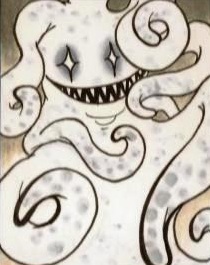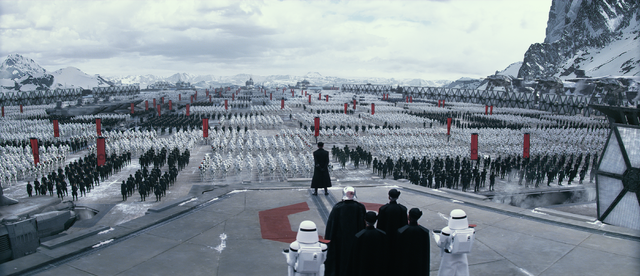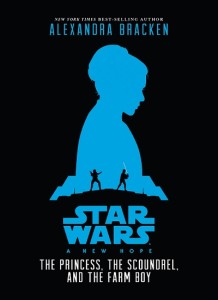 I’m going to shout it from the hills: I love the Bantam era. I love warlord and superweapon of the week. I love silly, disjointed things that years later, make us wonder what exactly we were thinking when we first read this. I love the things that don’t neatly fit into the greater Star Wars puzzle, and there is much to be said in defense of embracing the weird. We’re in a new era of Star Wars now, and with that comes all the unexplored territory. We don’t have to avoid the mistakes of Legends; in fact, I could happily argue that many of those mistakes are better in the long term.
I’m going to shout it from the hills: I love the Bantam era. I love warlord and superweapon of the week. I love silly, disjointed things that years later, make us wonder what exactly we were thinking when we first read this. I love the things that don’t neatly fit into the greater Star Wars puzzle, and there is much to be said in defense of embracing the weird. We’re in a new era of Star Wars now, and with that comes all the unexplored territory. We don’t have to avoid the mistakes of Legends; in fact, I could happily argue that many of those mistakes are better in the long term.
One of the things that Star Wars fandom had run into, in the twilight of the Legends years, was quality issues. Ask a group of Star Wars fans about Fate of the Jedi and Crucible, and you’ll get a wide variety of (frequently negative) reactions. Sometimes people ask me about how I feel about Fate of the Jedi, and my response is usually along the lines of “I remember the hilarious Abeloth illustration that’s on Wookieepedia, that Daala is the worst politician alive, and that Luke and Ben went on a father-son trip that proved that Ben’s taste in women is no better than Luke’s had been.” That is possibly one of the sillier sentences I’ve written in a while, but let’s deconstruct that. What if we didn’t worry so much about things being silly or not making sense? What if wild plots could be the basis for a good story? Because there was a time when we really were thinking that way.
Many of the earliest Star Wars books are from a time when we had no idea about longer-term galactic history. Big chunks of galactic history were a complete blank, and the authors really couldn’t do much filling-in. We didn’t know exactly how the Old Republic fell until the Dark Nest trilogy was released, and of course now that we knew galactic history out-of-universe, it worked its way into Legacy of the Force. But we did fill in about twenty years of galactic history with no good references about what came before. And that led to things that just didn’t make sense in the longer run. Read More

![51gF3dYpeTL._SX329_BO1,204,203,200_[1]](http://eleven-thirtyeight.com/wp-content/uploads/2015/09/51gF3dYpeTL._SX329_BO1204203200_1.jpg) As it happens, we were long planning a series of pieces called “Gray Matters” on how the various sides in Star Wars are and ought to be portrayed in the new canon. Our first piece was either going to be about the Empire or the Rebellion, where we would discuss the comparative pitfalls of black and white morality vs moral grays and try to come up with a solution that was morally nuanced but still fit the morality tale that is the Star Wars saga. And lo – here came a novel called Lost Stars by Claudia Gray, featuring of all things a narrative about just how decent people serve as Imperial Loyalists. The coincidence (and the now doubly punny title) was impossible to ignore, so here we are!
As it happens, we were long planning a series of pieces called “Gray Matters” on how the various sides in Star Wars are and ought to be portrayed in the new canon. Our first piece was either going to be about the Empire or the Rebellion, where we would discuss the comparative pitfalls of black and white morality vs moral grays and try to come up with a solution that was morally nuanced but still fit the morality tale that is the Star Wars saga. And lo – here came a novel called Lost Stars by Claudia Gray, featuring of all things a narrative about just how decent people serve as Imperial Loyalists. The coincidence (and the now doubly punny title) was impossible to ignore, so here we are!![starwars-450x556[1]](http://eleven-thirtyeight.com/wp-content/uploads/2015/09/starwars-450x5561-243x300.png) On Monday, I presented
On Monday, I presented  Tomorrow sees the release of another three Star Wars novels, to add to the five released earlier this month on Force Friday. These three novels are special, written by three different authors with three wholly different adaptations of the Original Trilogy for a middle-grade (ages 8-12) audience. If you’ve read any of
Tomorrow sees the release of another three Star Wars novels, to add to the five released earlier this month on Force Friday. These three novels are special, written by three different authors with three wholly different adaptations of the Original Trilogy for a middle-grade (ages 8-12) audience. If you’ve read any of 